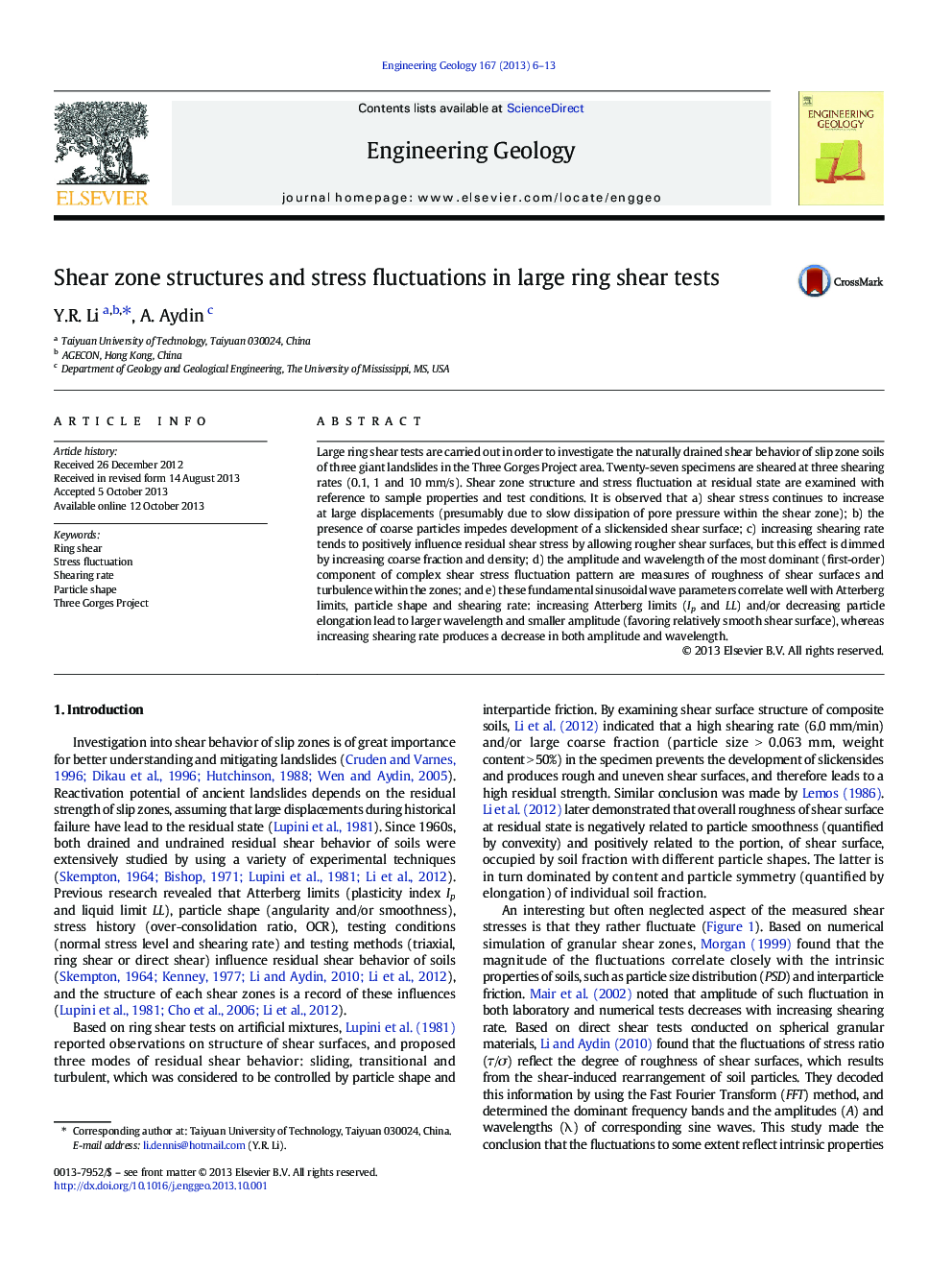| کد مقاله | کد نشریه | سال انتشار | مقاله انگلیسی | نسخه تمام متن |
|---|---|---|---|---|
| 4743696 | 1641817 | 2013 | 8 صفحه PDF | دانلود رایگان |
• Large ring shear test on slip zone soils with abundant coarse particles
• Atterberg limits (Ip and LL) and particle shape influence shear zone structure.
• Shearing rate influences shear zone structure.
• Ip, LL, particle shape and shearing rate dominate the fluctuation of shear stress.
• Decoding the fluctuation with Discrete Fourier Transform (DFT)
Large ring shear tests are carried out in order to investigate the naturally drained shear behavior of slip zone soils of three giant landslides in the Three Gorges Project area. Twenty-seven specimens are sheared at three shearing rates (0.1, 1 and 10 mm/s). Shear zone structure and stress fluctuation at residual state are examined with reference to sample properties and test conditions. It is observed that a) shear stress continues to increase at large displacements (presumably due to slow dissipation of pore pressure within the shear zone); b) the presence of coarse particles impedes development of a slickensided shear surface; c) increasing shearing rate tends to positively influence residual shear stress by allowing rougher shear surfaces, but this effect is dimmed by increasing coarse fraction and density; d) the amplitude and wavelength of the most dominant (first-order) component of complex shear stress fluctuation pattern are measures of roughness of shear surfaces and turbulence within the zones; and e) these fundamental sinusoidal wave parameters correlate well with Atterberg limits, particle shape and shearing rate: increasing Atterberg limits (Ip and LL) and/or decreasing particle elongation lead to larger wavelength and smaller amplitude (favoring relatively smooth shear surface), whereas increasing shearing rate produces a decrease in both amplitude and wavelength.
Journal: Engineering Geology - Volume 167, 17 December 2013, Pages 6–13
